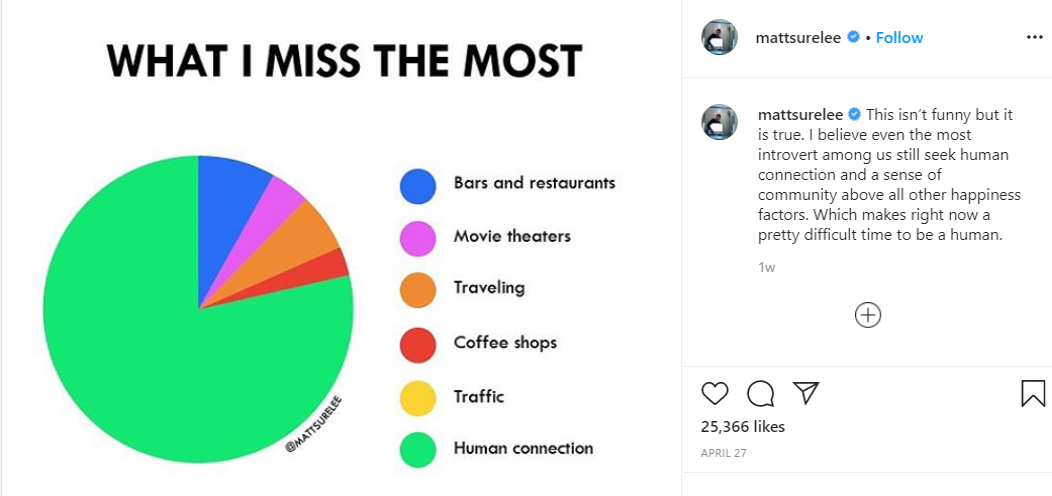
Regular readers of this blog will remember Matt Shirley, the guy using Instagram to post clever charts that sum up how millions are thinking and feeling as we go through this shared experience called COVID-19.
The pie chart above looks innocent enough. And as Matt points out in his caption, it is intentionally not funny, but it is highly relatable. Unlike just about every day of our lives, the last two months have been unusual in that we’re all enduring and living this pandemic together. While we may have different opinions about it – and factors such as geography and political party preferences are determinants – we are all experiencing some degree of loss.
It might be the ultimate loss – the death of a friend or relative. It might be the inability to grieve in traditional ways. Or perhaps it’s the loss of a job, a graduation ceremony, or a wedding. Or a reversal of fortunes in the investment economy. Or the loss of freedom to do and go where we want, and not think about who’s coming the other way on the sidewalk.
But one thing is probably a certainty – we are almost all feeling some loss of connectedness.
And that’s a bit of a contradiction in that most of us are well-connected by fiber optic wires that carry the Internet. Just about everyone has experienced a video call these past many weeks, via platforms like Skype, Zoom, or Facetime. And we’re virtually all linked on one type of social media platform or another. Our phones are constantly binging with text alerts, push messages, emails, and other content from friends, family, co-workers, and media outlets.
But a true sense of connectedness is often fleeting, and hard to get our heads around.
What is connectedness?
Trying to define it is reminiscent of that (in)famous Supreme Court ruling that goes all the way back to 1964, and a nasty court matter known in the legal tomes as Jacobellis v. Ohio. Not to get all Professor Kingsfield on you, but the case was all about trying to nail down precisely what is/isn’t obscene material.
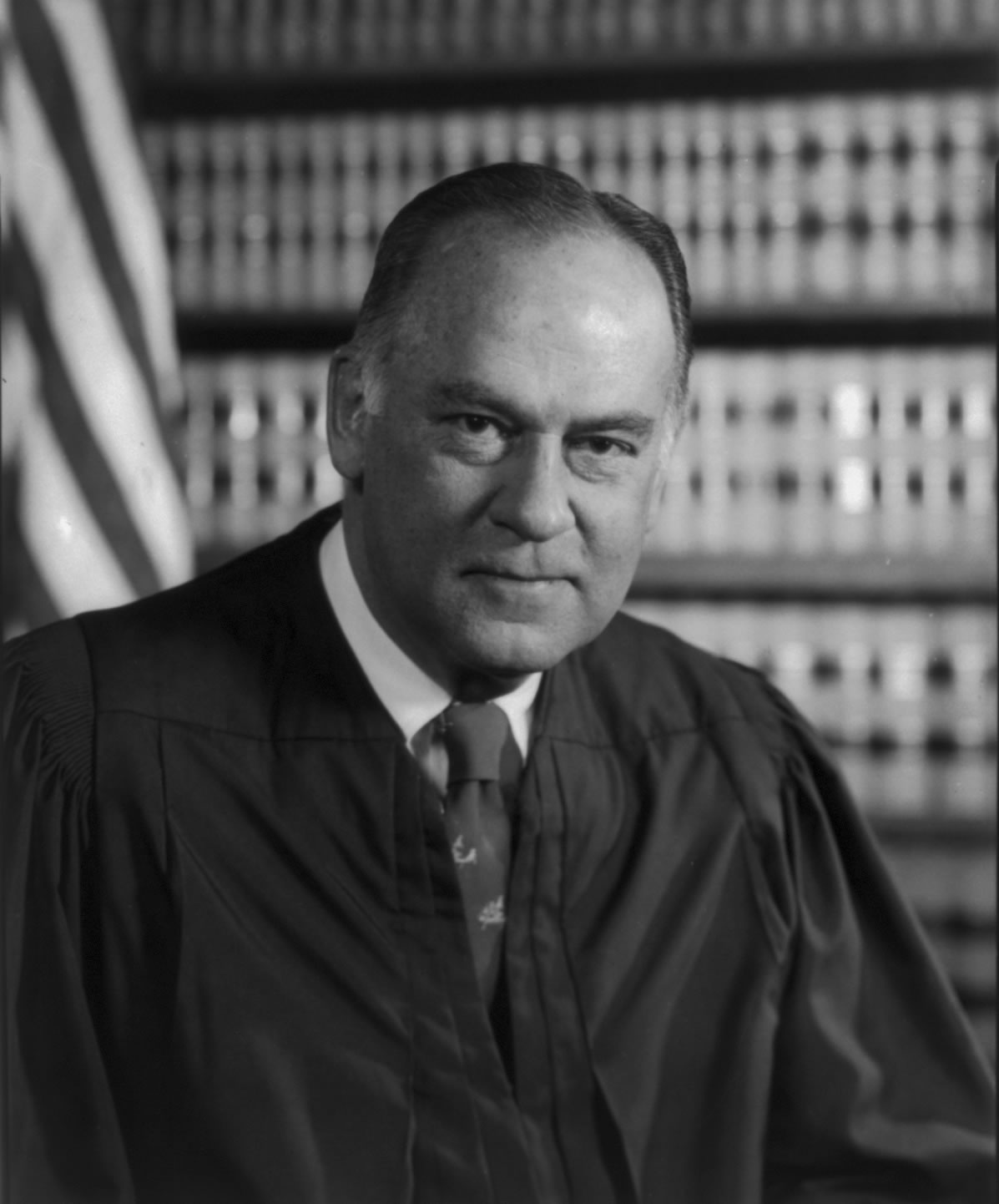 In his opinion, Supreme Court Justice Potter Stewart chose not to try to define “hard core” pornography. Instead he used this 7-word phrase that says it better than paragraphs and pages:
In his opinion, Supreme Court Justice Potter Stewart chose not to try to define “hard core” pornography. Instead he used this 7-word phrase that says it better than paragraphs and pages:
“I know it when I see it.”
Similarly with connectedness, I can’t define it for you. And it might be very different for givers and recipients alike. But I can tell you this:
“Connectedness – I know it when I see it.”
And hear it on the radio. Because while it represents a very high bar, I’ve actually seen and heard quite a bit of it since the COVID-19 news hit critical mass back in March.
In our first research study about radio and the pandemic, conducted early last month, we asked respondents to point to the thing they miss the most since the outbreak began to permeate our lives.
It turns out Matt Shirley’s instincts were spot-on. Here’s the way it broke down among nearly 21,000 commercial radio listeners:
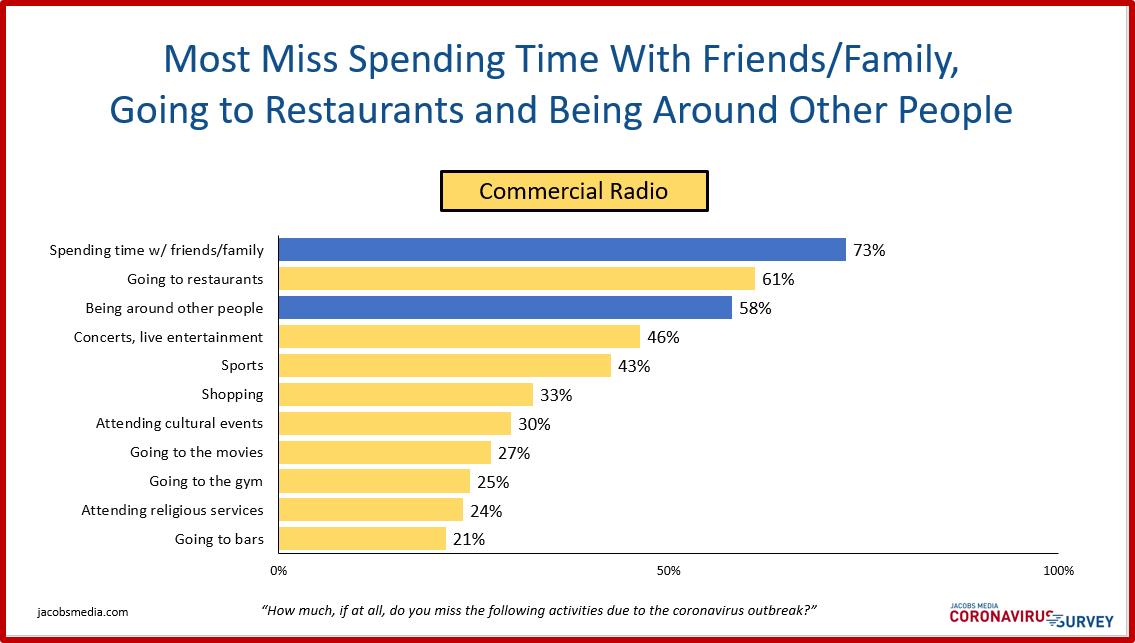
In the public radio version of this study, spending time with friends and family, and being around other people ranked #1 and #2. In the Christian music radio segment, both these interpersonal values were behind attending religious services.
This says a lot, because going to the mall, spending time at the gym, and attending sporting events might have ranked much higher back in February. Thanks to COVID-19, our priorities are shifting And this concept of connectedness becomes more important to us with each passing week.
That’s why the radio stations that are acing this test are worth talking about. They pay attention to the data, but even more importantly, they listen to the heartbeat of their audience, and instinctively understand the fabric and tone of what they’re hearing. They have become adept at speaking in a voice that represents their brands and their markets.
“Connectedness – I know it when I see it.”
Once that’s in place, it becomes relatively easy to know how you want your station to behave – the events, promotions, partnerships worth pursuing. It also becomes a function of understanding the situations and circumstances where a station can do the most good and have maximum impact.
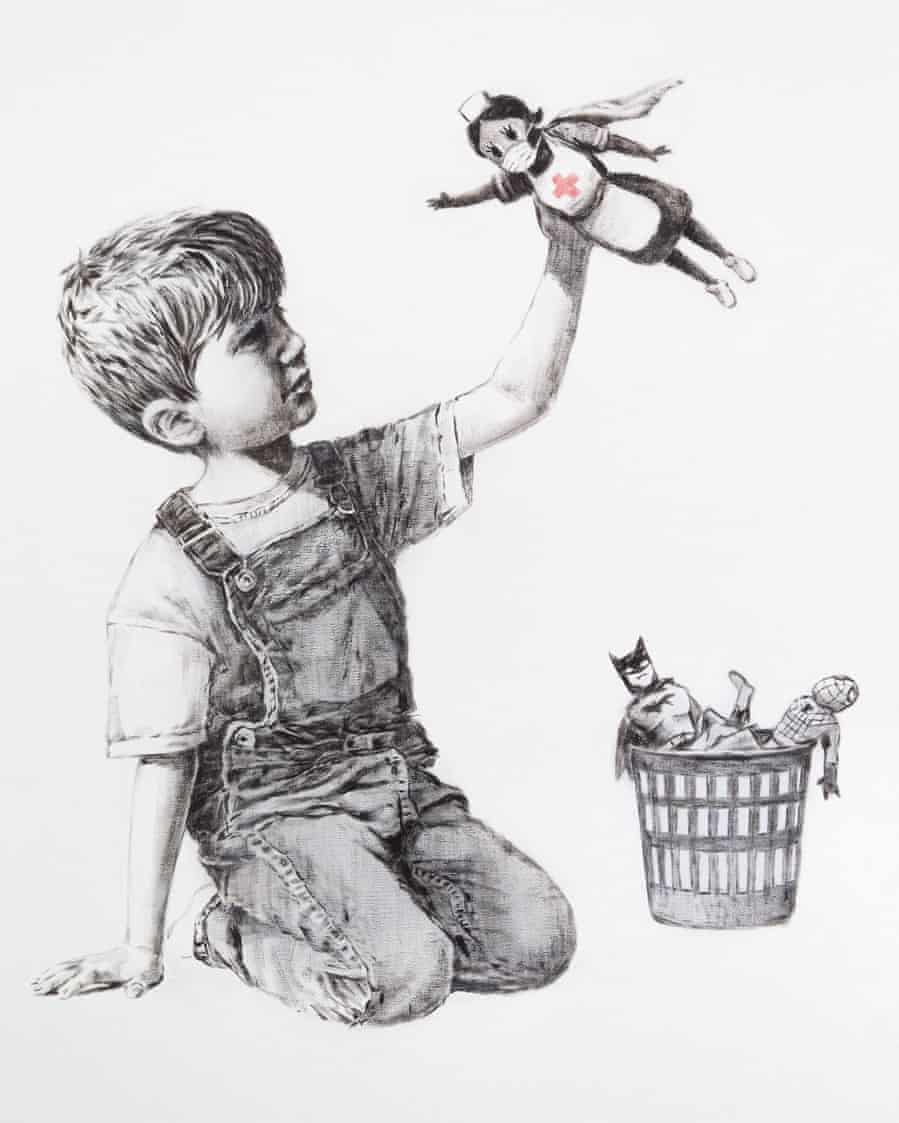
Yesterday was Nurses Day – the perfect time to salute all those healthcare heroes who are putting it all on the line – every day – often working 12-hour shifts doing the unimaginable.
Yes, they signed up for this. But enduring hospitals deluged by very sick patients, coupled with shortages of personal protective equipment, and occasionally dealing with angry protesters has made an challenging job much tougher.
So, how to thank this community of medical workers who are giving their all during this pandemic. And if the models are correct, they are nowhere near out of the woods, given predictions of flare-ups this summer, as well as a second wave of COVID-19 this fall.
The mysterious, but well-known street artist, Banksy, is famous for his often subversive themes and wicked ironic art. But since the pandemic breakout, pieces like the one you see pictured above (hanging in a hospital in the UK) have dominated his work.
That’s great if you’re an artist, but what if you’re a radio station?
To honor nurses on their designated day, a couple stations (that I know of) took the opportunity to shine the light on the nurses in the forefront of trying to keep us healthy under what are often the worst of circumstances.
Terrie Carr, program director and host of WDHA in New Jersey, yesterday stayed 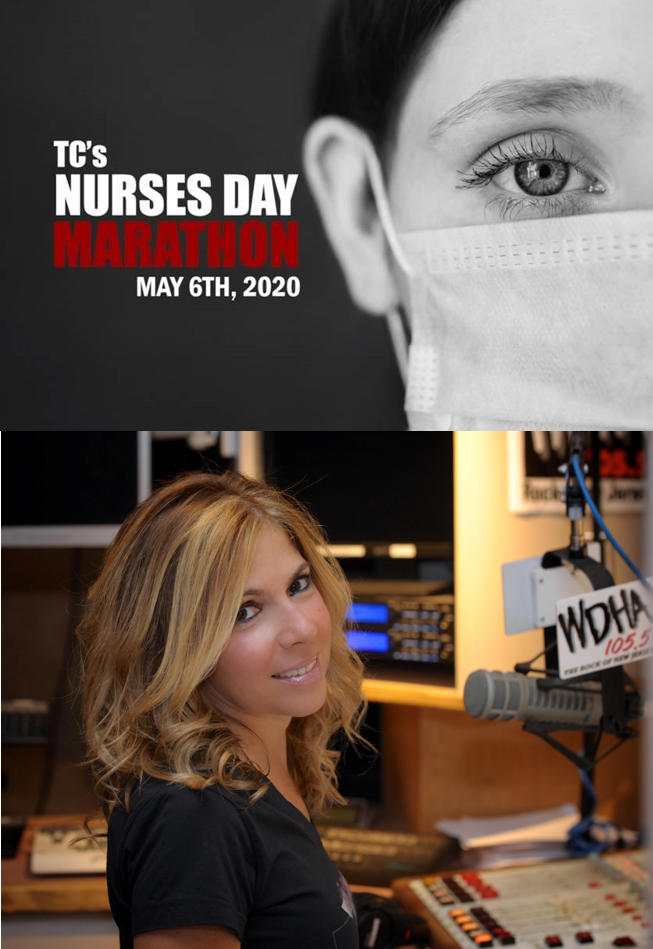 on the air yesterday from 6am-6pm – honoring nurses working 12-hour shifts, day in and day out. For Terrie, it’s not just a humanitarian issue – it’s personal. Her mom’s a nurse, and of course, living and broadcasting in the Tri-State Area is all about the horrific impact of COVID-19 in the hardest hit area in the world.
on the air yesterday from 6am-6pm – honoring nurses working 12-hour shifts, day in and day out. For Terrie, it’s not just a humanitarian issue – it’s personal. Her mom’s a nurse, and of course, living and broadcasting in the Tri-State Area is all about the horrific impact of COVID-19 in the hardest hit area in the world.
The outpouring of support and appreciation was overwhelming. One healthcare professional, Vanessa Warner, reminded Terrie and her rock n’ roll audience about what the most famous nurse of all time stood for:
“Florence Nightingale was a rebel. She was an innovator — flexible, fearless, and creative in even the most gruesome of conditions. She was even branded a “radical” because she believed in sanitization!”
And then there’s Sherman & Tingle, mornings on WDRV in Chicago. Along with teammate Jill Eagan, they also pulled a 12-hour shift, talked to nurses and their families, and raised north of $14,000 during the day for Windy City “Healthcare Heroes.”
“Connectedness – I know it when I see it.”
But serving communities in meaningful ways isn’t just about celebrating those special days on the calendar.
We’ve seen in our COVID-19 research the best thing most stations can do right now is support first responders – especially those on the front lines. 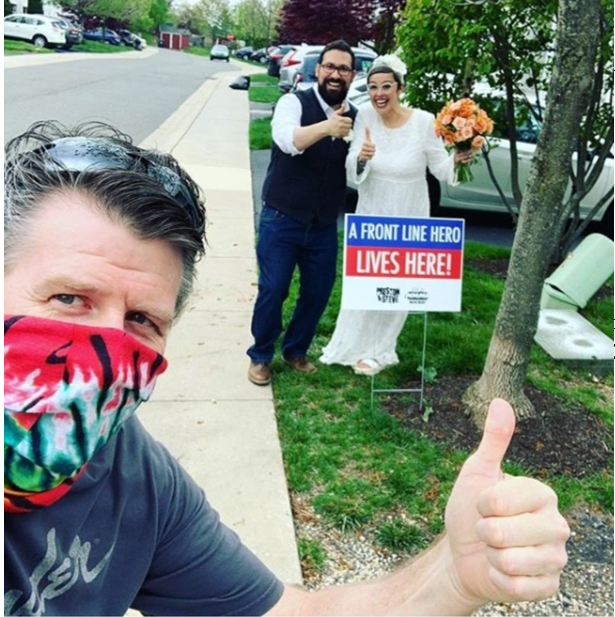 No station in Philadelphia captures that spirit better year in and year out than WMMR.
No station in Philadelphia captures that spirit better year in and year out than WMMR.
The Preston & Steve Show is one of the best in the business. Their team works exceptionally well together, and their instincts are always excellent. Philly is one of those markets that demands the right touch – the locals are famous for being a tad judgmental and very cynical.
That’s why it was no surprise these guys jumped on the lawn sign bandwagon. But rather than just leaving their placement to street teamers, the show sprung into action, sticking those signs on the lawns of healthcare workers all over the metro.
“Connectedness – I know it when I see it.”
These nurses support promotions are “old school” – core to the way radio stations have supported their communities for decades. Marathon airshifts and lawn signs are as “roll up your sleeves” as it gets.
But how do you combine those grassroots ethics with the modern digital tool kit available to radio stations everywhere?
KS95 in Minneapolis/St. Paul had an idea that’s very congruent with their Hot AC fan base.
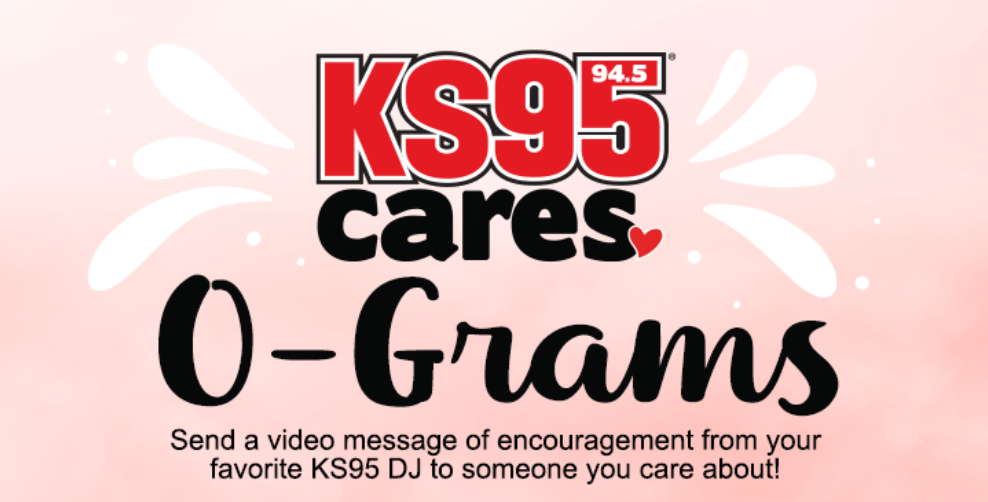 This isn’t a morning show promotion – it’s a total station effort. And the mechanics are simple – you nominate someone in your life who could use some encouragement, and you select which KS95 personality you’d like to deliver that message from a drop-down list of the entire airstaff.
This isn’t a morning show promotion – it’s a total station effort. And the mechanics are simple – you nominate someone in your life who could use some encouragement, and you select which KS95 personality you’d like to deliver that message from a drop-down list of the entire airstaff.
From there, that personality cuts a video sent to your friend, relative, or co-worker from you. While I didn’t see any videos posted on the website, you have to believe recipients will share them anywhere and everywhere they can – a great way for KS95 to support its audience, while continuing to build on a brand that’s nearly a half century old. Of course, that’s how you become one of those stations that stands the test of time.
These kinds of promotions can’t be handed off to interns. They are time and effort intensive. And they require discipline, organization, and commitment by an airstaff already under stress, working more hours than most of their predecessors ever did, often broadcasting from home in less-than-ideal circumstances.
When you have great radio stations in these metros going above and beyond to support their communities in their times of need, it’s good for the entire market. It puts the right kind of pressure on stations across the street to step it up to avoid getting lost in the pack. It also is a reminder to listeners how a hometown station is able to differentiate itself from the flurry of new media competitors, most of which simply have little to no true connectedness to the audiences they serve.
Radio brands that set their own curves in their markets tend to behave this way as a matter of course. Listeners have come to expect it, and  internally, so have staffers who push their stations to perform at a higher level.
internally, so have staffers who push their stations to perform at a higher level.
Sadly, not every market in the U.S. has stations that do much more than execute their formats, and strive to make their ratings and revenue goals.
So, let’s celebrate the ones that do, and remember how they got there, and what it took to build their brands over the years.
Unfortunately, there are no “best practices” that point stations in the right direction. Nor is there a “road map.” Thinking about your “core competencies” won’t get you any closer to achieving connectedness. Nor are there KPIs – or key performance indicators – to help you measure your success.
“Connectedness – I know it when I see it.”
My examples in this blog are the tip of the iceberg – the ones in front of my face that I’m aware of. There are hundreds of these stories scattered throughout America (and the globe). And if you’d like to be sure they’re seen and heard, please comment away.
Sometimes, it pains me that it takes a high stress event to bring out the best in radio. But at least these shiny moments of connectedness continue to happen at a time when not only are radio’s rank-and-file under immense personal and profession pressure, but their companies are reeling by the sudden turn of economic events happening in every community, town, and metropolis in the land.
Let’s continue to celebrate the good stuff, and work together as an industry to remind radio’s end users – audiences, advertisers, communities – what radio can do.
And in the process, define what it means to be connected.
- Like A Pair Of Old Jeans - April 2, 2025
- What’s Fair Is Fair - April 1, 2025
- What’s On Your Bucket List? - March 31, 2025




Leave a Reply